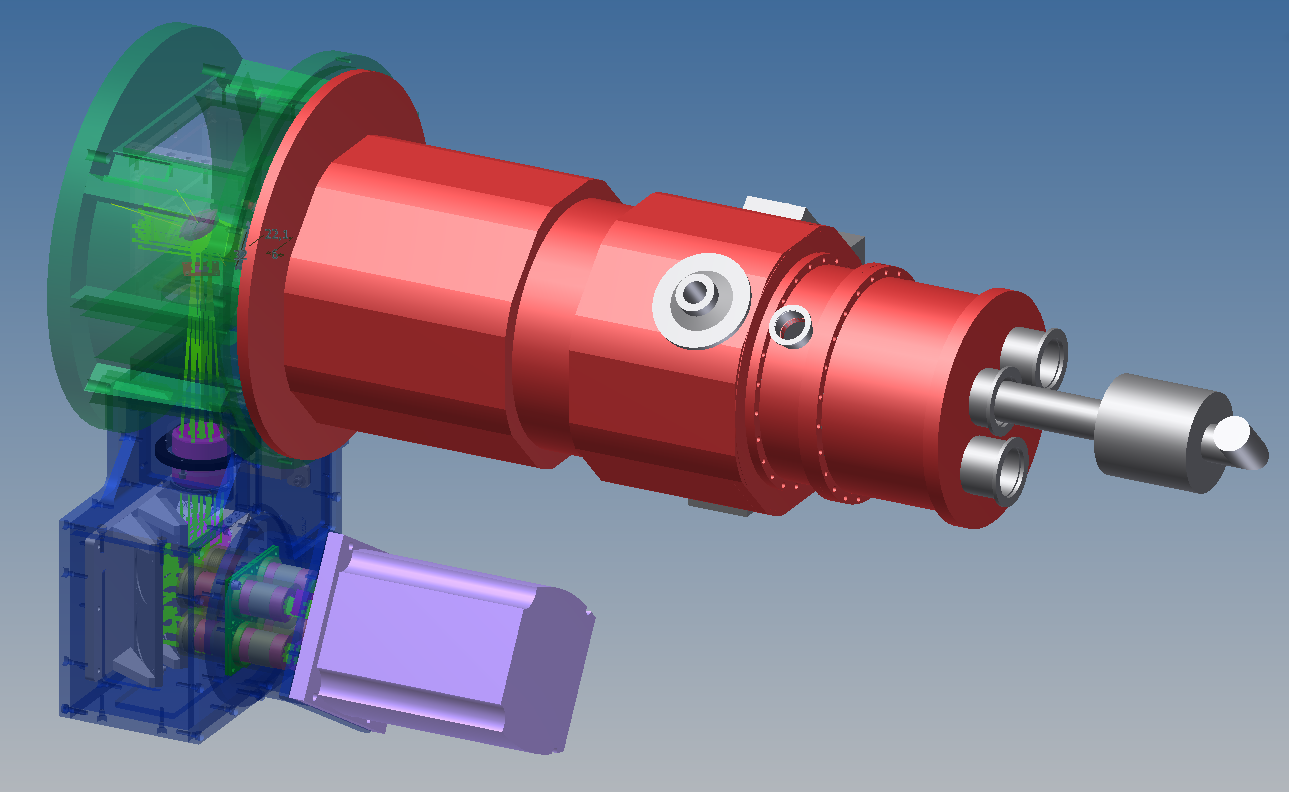the instrumentation
REMIR, our infrared (zJHK') camera.
ROS2, the new optical multi-channel imaging camera.
REM hosts two parallel instruments. REMIR, a infrared (1-2.3 micron) camera and ROS2, a visible camera.
The cameras observe the same field of viev of 10x10 arcmin thanks to a dichroic placed before telescope focal plane. The observations are carried out following the programmed filter list for each of the two arms.

In the general design of the Nasmyth focus (above) we show the position of the two cameras: after the interface (in green) where the dichroic and the dither plate (which allows the infrared images to be shifted for sky subctraction) are located, REMIR (in red) is aligned with the optical axis, while ROS2 (in blue) is placed at 90 degrees after the dichroic reflection.
Optics, Filters and Performances.
The two cameras have almost the same field of view, a square of 10x10 arcmin and co-centered by means of the
orientable dichroic. Nevertheless, due to mechanical constraints we do not have exactly the same field center
in the two cameras and the center of mechanic rotation around the Nasmyth rotator is not in the center of
the fields. Moreover the rotating, tilted plate, which allows a proper infrared sky determination and automatic
image reduction, shifts the rotation center (and the field of view) of Remir images a but more, and different
in each tilted plate orientation.
The figure below shows the center of rotation of the frame by letting the rotator move during exposition.
You see the Ross image with the cross at its center of rotation and the Remir images with a circle in their
centers of rotation.
The positions of the four infrared centers lye along a circular path due to dither plate movement.
The centers and circular path are reported in every images of this comparison.
The mechanical redesign of the REM/Ross interface due this year will overcome these off centering problems.

In this page you can have
more ROS2 details.
Also
REMIR details can be found here.


